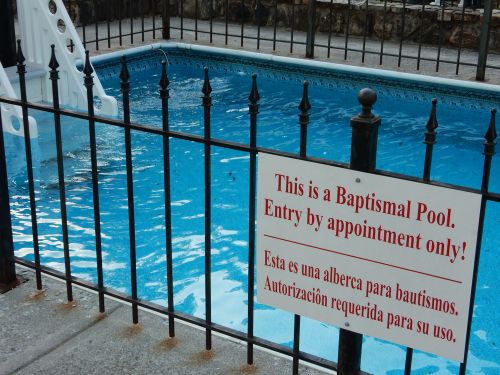 Baptism by immersion in water is both a sacred ritual and rite of passage for followers of various religions, but especially Christianity. For many adherents, it marks a major milestone in their spiritual walk, and as such, a church or ministry must establish a procedure for conducting this ritual. As clergy or a church leader, it is your responsibility to make sure that baptisms are safe in preparation and execution. Here are some things to keep in mind.
Baptism by immersion in water is both a sacred ritual and rite of passage for followers of various religions, but especially Christianity. For many adherents, it marks a major milestone in their spiritual walk, and as such, a church or ministry must establish a procedure for conducting this ritual. As clergy or a church leader, it is your responsibility to make sure that baptisms are safe in preparation and execution. Here are some things to keep in mind.
Checking for Hazards
While a baptistry may be smaller than a pool, it’s still a body of water and the potential for danger is there, especially when it’s filled with water. Watch out for these hazards:
- Contamination: Water that has sat in a baptistry for days or weeks is a breeding ground for bacteria, mold, and other microbes that can be harmful, especially if water is swallowed. Be sure to drain your tanks in between services.
- Damage: Leaks from the container can create damage that leads to major problems, such as mold and negative impacts on structural and electrical components.
- Drowning: Baptismal pools should be secured to prevent children from entering unsupervised. Draining between uses also helps to reduce this risk.
- Burns: Water that is too hot can burn the skin. If you use heated water, check the temperature before allowing anyone to enter.
- Electrocution or shock: Water is a great conductor of electricity, so be careful about using electronic equipment such as microphones near your baptism. Wired mics should be suspended above the baptistry.
- Slipping: Puddles of water are slipping hazards near the baptistry. It’s recommended that you dry off any steps and handrails between immersions. Like bathtubs, baptistries can also have slippery surfaces when drained.
Baptizing Safely
In addition to hazards, there are best practices to follow when baptizing others. These tips help make water immersion safer for everyone:
- Helping hand: A baptistry should have handrails inside and out of the pool for stability. It’s a good idea to also have people outside to help those being baptized get in and out safely.
- Safe amplification: Wireless mics can be dangerous around water. Speeches and pronouncements should be done by another person at a microphone that is away from the water. If the baptizer must do the talking, consider doing this unamplified.
- Immersion assistance: The act of immersion may be disorienting and uncomfortable, causing a person to flail and panic. The baptizer may be overwhelmed and endangered, especially by someone who is physically large and strong. Have ushers or assistants on hand to help with immersion. If allowed, include alternatives to immersion for those who are apprehensive about the process.
- Dry surfaces: Slipping and falling can lead to injury at any point. Have plenty of towels on hand to dry surfaces between baptisms.
Planning for Safety
If you have the opportunity to build or renovate your baptistry, it’s a good time to incorporate safety into the design. Handrails and slip-resistant surfaces are must-haves for the pool area. Rails should also extend into the water. Draining and filling the pool should be relatively easy and quick to do. If you’re planning on having a heating system for the water, it should be easy to access and shut off quickly, especially in an emergency situation. Baptisms symbolically represent a cleansing of one’s soul, so the water should be clean at all times. Your pool should have an active filtration system or chemical treatment of the water, not unlike a swimming pool or fountain.
As a pastor or church leader, others look to you for spiritual guidance and wise counsel. They also expect you to baptize them in accordance with the tenets of your faith. Make sure that you provide a safe environment for water immersion through safe practices, design, and maintenance.